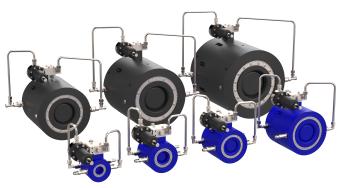The Silent Threat
Just as high blood pressure silently damages the human body, leading to potentially fatal consequences like heart attacks, unchecked water pressure within our networks poses a similar threat. Ignoring elevated pressure in a water distribution system is akin to neglecting a critical health issue, risking catastrophic bursts, substantial water loss, and compromised service.
Fortunately, just as medication can effectively manage high blood pressure, pressure management technologies offer a powerful solution to maintain the health and longevity of our vital water infrastructure. One such solution is the installation of Pressure Reducing Valves (PRVs) which can significantly improve network performance and resilience.
Water utilities and councils face the constant challenge of managing aging infrastructure while meeting growing demands. Non-revenue water (NRW) represents a significant drain on resources and whilst leakage is a major component of NRW, we know that high pressure is a primary culprit. Excessive pressure not only exacerbates existing leaks but also weakens pipes, joints, and other components, increasing the likelihood of future bursts. This cycle of damage and repair is costly, disruptive, and wastes precious water resources.
Pressure management offers a proactive approach to tackling NRW and extending the lifespan of water assets. By strategically installing PRVs, utilities can control and optimise pressure throughout the network. These valves function like the medication prescribed for high blood pressure, regulating the flow and reducing pressure to optimal levels. This targeted approach minimises stress on the infrastructure, reducing both the flow rate of existing leaks and the risk of new bursts. The impact is substantial: studies show that reducing system pressure by just 20% can decrease leakage flow rates by 11% to 28%, depending on the specific network characteristics.
The benefits of pressure management extend beyond leak reduction. Lowering pressure also minimises the mechanical stress on pipes and fittings, prolonging their useful life and deferring costly replacements. This translates to significant long-term savings for utilities and councils. Furthermore, optimised pressure improves overall system efficiency, reducing energy consumption for pumping.
For councils and utilities operating with limited budgets, pressure management offers an exceptionally attractive return on investment (ROI). Installing PRVs is a relatively low-cost intervention with immediate and measurable results. The reduction in NRW translates directly into cost savings from reduced water purchases and lower operating expenses. In many cases, the payback period for PRV installations is remarkably short, making it one of the most effective and financially viable strategies for improving water network performance.
“In many cases, the payback period for PRV installations is remarkably short, making it one of the most effective and financially viable strategies for improving water network performance.”
The Georg Fischer NeoFlow PRV exemplifies the type of solution that makes pressure management accessible and effective. Its low-maintenance design minimises ongoing costs, while its ease of installation simplifies deployment. This makes it an ideal choice for utilities seeking a reliable and cost-effective way to implement pressure management.
However, the successful implementation of a pressure management strategy requires more than just installing PRVs. Effective communication with the community is paramount. Residents may notice changes in water pressure following the installation of these valves. While these changes are typically minor and within acceptable limits, proactive communication can allay concerns and build public support for the project. Explaining the benefits of pressure management, including reduced water loss, improved infrastructure reliability, and long-term cost savings, can help residents understand and accept any temporary inconveniences. A well-crafted communication strategy, utilising various channels like local media, social media, and community meetings, is essential for ensuring a smooth transition and maximising the positive impact of pressure management.

The NeoFlow come in a range of sizes and have low installation and maintenance costs.
Just as managing high blood pressure is essential for human health, pressure management is critical for the health and sustainability of our water networks.
Ignoring excessive pressure is a recipe for disaster, leading to costly bursts, significant water loss, and compromised service. By embracing pressure management technologies, like the Georg Fischer NeoFlow PRV, councils and utilities can take a proactive approach to minimising NRW, extending asset life, and improving overall system efficiency. These interventions represent a vital investment in the future of our water infrastructure, ensuring a reliable and sustainable water supply for generations to come.
By communicating proactively and effectively with their communities, councils and utilities can ensure that these vital improvements are understood and embraced, preventing a water network “heart attack” and ensuring the long-term well-being of this essential resource.









